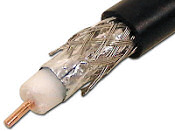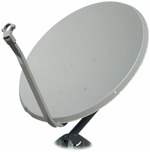 Technology Choice & Coverage - What's available to me? Broadband is unfortunately a minefield of different technologies, many with differing degrees of performance, price and UK coverage. As a result most ISPs don't even mention what technology they use because it can cause added confusion. However it's still a good idea for you to have a basic understanding of the differences. Likewise we should point out that migration between different technology types can be a complicated matter and will in most cases necessitate a new line, installation and or hardware with all the associated costs. For example, you can usually switch between different ADSL ISPs without too much hassle but swapping from that to Cable (e.g. Virgin Media) would require a new line and kit. At present only Mobile Broadband and DSL based services offer quick and easy switching between providers of the same technology. People who live in isolated rural areas would also do well to study our Broadband Solutions for Remote and Rural UK Communities article, which covers many of the same technologies listed below but focuses much more directly upon the coverage pitfalls and needs of those affected. Digital Subscriber Line / DSL (ADSL, ADSL2+)  At the time of writing DSL based fixed line broadband services dominate the market. Related services are very cheap, flexible (good usage allowances), easy to install, available to almost the entire country and delivered alongside your normal voice services via traditional copper telephone lines. Service speeds of up to 24Mbps are theoretically possible, yet DSL solutions are notoriously unreliable and often deliver performance that is significantly less than advertised; often through no fault of the ISP itself (Ofcom requires most ISPs to provide a realistic estimate of speed during the sign-up process). Migration between different DSL providers is usually quick and easy but there are some exceptions where moving between ISPs can attract additional costs and longer downtime (explained here in more detail).
Cable (DOCSIS)  The UK is home to around four or five niche fixed line cable operators but only Virgin Media covers 50% of the country. Related services run over a mix of high-grade coaxial and some fibre optic cable, which delivers fast, flexible, affordable and usually reliable speeds of up to 100Mbps (200Mbps in the near future). Cable providers also offer television services down the same phone and broadband line. New connections often require an engineer install, although this is frequently offered for free.
Fibre Optic (FTTH / FTTP, FTTC)  True fibre optic services are extremely fast (consumer speeds of up to 1Gbps), flexible and work by sending tiny pulses of light down a glass (silica) fibre cable. Sadly most UK consumers (66% of the country by 2015) will only be able to access Fibre-to-the-Cabinet (FTTC) technology, which offers lower speeds of up to 40Mbps (rising to 80Mbps in 2012) because the link between your home and local street cabinet is still governed by existing copper cable (cheaper but less reliable over distance) from predominantly BT based providers (BT , PlusNet etc.). Fibre optic services can be costly to setup (some ISPs charge around £100) and often carry a price premium of approximately +£10 extra per month over traditional DSL broadband packages. New installations require an engineer and at the time of writing Ofcom have yet to establish a firm standard for migrating between different ISPs. At present most fibre optic services have very limited coverage but can also carry TV and phone services over the same line.
Satellite  Satellites are autonomous space stations that orbit (space) high above the Earth and thus have the capability to deliver 100% coverage of the UK with speeds of up to 10Mbps via the latest HYLAS (Avanti) and KA-SAT (Eutelsat) satellites. Sadly such services are also very expensive to install (usually around £250 to £1000) and package prices often start at around £25 per month. Related services can also suffer from heavy throttling (aggressive traffic management), lower usage allowances and high latency. This can reduce speeds to barely unusable levels, hamper VPN / Skype and make fast paced multiplayer games unplayable. Satellite is thus a useful stop-gap measure for isolated rural areas where broadband connectivity has yet to deliver but it's still not an ideal replacement for fixed line services.
|